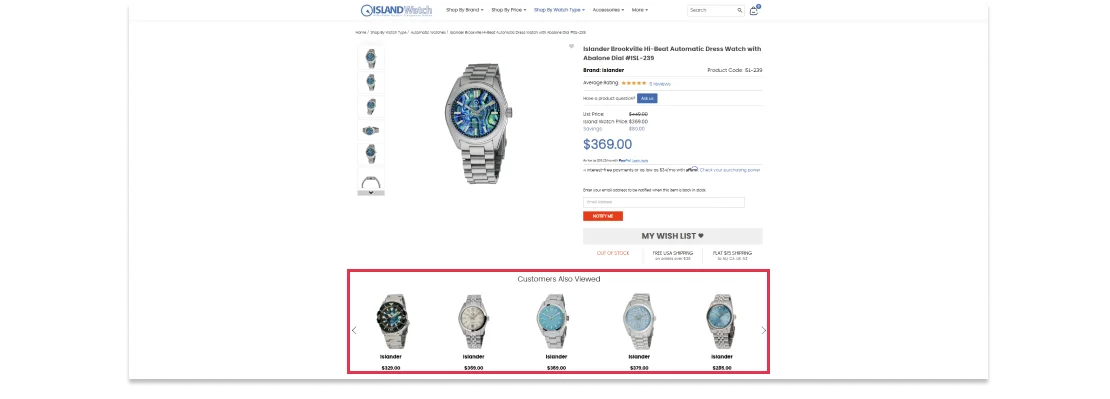With the holiday season approaching, eCommerce businesses are gearing up for their biggest revenue opportunity of the year. The 2025 holiday season showed us what works: shoppers wanted mobile-first experiences, flexible payment options, and authentic social proof before buying. Consumer spending stayed strong, but people were pickier about where their money went.
For 2025, these patterns are intensifying. Shoppers expect faster sites, smarter recommendations, and payment plans that fit their budgets. The brands that win this season will be the ones that adapted months ago, not the ones scrambling in November.
Price-Conscious Shoppers Still Want Quality
Last year proved that shoppers still spend during the holidays, but they’re doing homework first. Price comparisons, review checks, and waiting for the right deal have become standard behavior. Value-conscious shoppers aren’t just looking for discounts—they want quality products at fair prices with exclusive discounts that feel earned, not gimmicky.
How to Prepare:
Promote Value and Quality: Show why your products are worth buying. Detailed product descriptions, comparison charts, and transparent pricing build confidence. Customers buy when they feel smart about their purchase, not just when they see a percentage off.
Launch Early Deals and Loyalty Discounts: Start your holiday promotions in early November. Give your email subscribers and repeat customers first access to deals. This creates urgency and rewards the people already paying attention to your brand.
 Long Island Watch early black friday sale
Long Island Watch early black friday sale
Focusing on value-driven promotions attracts deal-oriented customers while building customer loyalty that lasts past December.
Your Mobile Site Better Be Fast
Mobile shopping isn’t optional anymore. More than half of holiday purchases happen on smartphones, and shoppers have zero patience for slow-loading pages or confusing navigation. If your checkout process takes more than three taps, you’re losing sales to competitors who made it easier.
Younger shoppers especially expect fast load times, intuitive navigation, and quick checkout options that don’t require typing out their address for the hundredth time.
How to Prepare:
Optimize Your Site for Mobile Performance: Test your site on actual phones, not just desktop browsers resized to mobile dimensions. Remove unnecessary form fields, simplify your menu, and make sure mobile optimization is your priority. Every extra second of load time costs you conversions.
 Example of our clients mobile optimized sites
Example of our clients mobile optimized sites
Offer Mobile-Friendly Payment Options: Integrate Apple Pay, Google Pay, and other one-click payment methods. During peak shopping days, convenience decides who gets the sale. Make it frictionless.
Prioritizing mobile optimization will reduce cart abandonment and create a better experience for shoppers buying from their couches or during lunch breaks.
Selling Directly Through Social Media
Social media has evolved from a discovery channel to a buying channel. TikTok Shop, Instagram Shopping, and Facebook Marketplace let customers complete purchases without ever leaving the app. Social commerce works because it removes friction between “I want that” and “I bought that.”
Live shopping events performed well in 2025, especially for brands targeting Gen Z and Millennial shoppers who value authentic interactions over polished ads.
How to Prepare:
Engage with Interactive Content: Host live shopping events on Instagram or TikTok where you demo products, answer questions in real time, and offer exclusive deals to viewers. These events create urgency and connection that static posts can’t match.
Leverage User-Generated Content: Share customer photos, unboxing videos, and honest reviews. User-generated content provides social proof and helps build trust faster than any branded content you could create.
Incorporating social commerce strategies helps you meet customers where they already spend their time—scrolling through their feeds.
Tools That Help Customers Shop Smarter
Today’s shoppers use wish lists, price alerts, and personalized recommendations to track products and catch deals. These tools turn casual browsers into informed buyers who return to your site when they’re ready to purchase.
How to Prepare:
Introduce Digital Wish Lists and Price Tracking: Let customers save products and get notified when prices drop or stock runs low. This keeps your brand visible even when they’re not ready to buy yet. It also gives you data on what products generate the most interest.
Use AI-Driven Personalization: Deploy AI tools that analyze customer preferences and browsing history to suggest relevant products. Good recommendations feel helpful, not creepy. They guide shoppers to products they actually want.
 Long Island Watch product recommendations
Long Island Watch product recommendations
Integrating smart shopping tools helps customers make confident purchases and increases the likelihood they’ll complete their order.
Payment Flexibility Is Expected Now
The popularity of Buy Now, Pay Later services exploded in popularity because they give shoppers budget flexibility without the stigma or interest rates of credit cards. BNPL options like Klarna, Afterpay, and Affirm increased average order values in 2025 by making higher-priced items feel more accessible.
How to Prepare:
Partner with BNPL Providers: Offer BNPL options at checkout. Integration is straightforward, and the providers handle the payment processing. You get paid upfront while customers spread their payments out.
Feature BNPL Options Prominently: Display payment plan options on product pages, not just at checkout. “4 interest-free payments of $25” is more compelling than “$100” for many shoppers.
Adding BNPL options can increase average order value and make your products accessible to budget-conscious holiday shoppers.
AI Powers Better Personalization and Support
Generative AI has moved from experimental to essential. It powers personalized email campaigns, product recommendations, and customer service interactions. During high-traffic periods, AI helps brands maintain quality service without hiring seasonal staff.
How to Prepare:
Use AI for Personalized Marketing: Generate customized email campaigns based on browsing behavior, past purchases, and abandoned carts. The right message at the right time converts better than generic blast emails.
Implement Chatbots for Customer Support: Deploy AI chatbots or virtual administrative assistants to handle common questions about shipping, returns, and product details. Save your human support team for complex issues that actually need personal attention.
Generative AI provides scalable solutions that improve efficiency and customer satisfaction without proportional increases in cost.
Kids Are Driving Purchase Decisions
Generation Alpha—kids born after 2010—are influencing family purchases through digital wish lists shared with parents and relatives. These lists make gift-giving easier and give retailers clear data on trending products among younger demographics.
How to Prepare:
Offer an Easy-to-Use Wish List Feature: Make it simple to create, save, and share wish lists via email or text. Parents appreciate tools that simplify holiday shopping for their kids.
Promote Holiday Gift Guides: Create curated collections organized by age, interest, or price point. Gift guides help overwhelmed shoppers make decisions faster.
Digital wish lists streamline the shopping process and provide valuable insights into what products resonate with younger consumers.
Conclusion
The 2025 holiday season rewards brands that prepared early. Mobile optimization, social commerce, AI-driven personalization, and flexible payment options aren’t nice-to-haves anymore—they’re baseline expectations.
Start testing your site on mobile devices now. Set up your BNPL integrations this week. Plan your social media content calendar before October ends. The brands that win in November and December are the ones putting in the work right now, not the ones who wait until Black Friday to figure things out.






